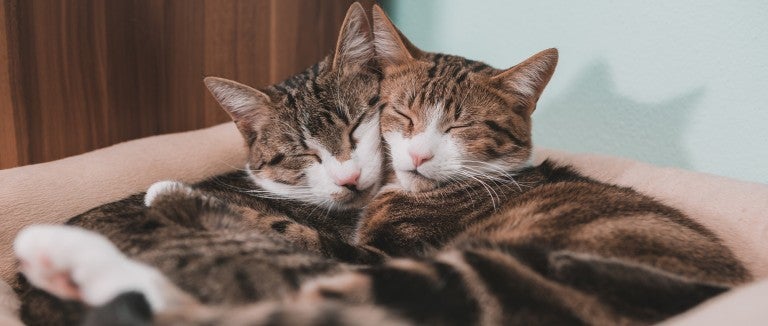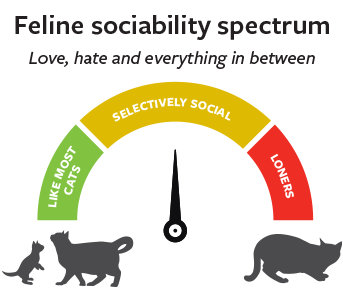Today’s the day. You’re ready to add a cat to your household.
You’re at the shelter, excited but nervous because you’re not just choosing for yourself. There’s someone else at home: someone who will soon have to share living space, litter boxes and your attention.
Staring at an array of cages containing felines of all ages and personalities, you ask yourself, “Who would my cat choose?”
Unfortunately for you and your cat, there’s no simple answer.

Relationship status
What a successful relationship looks like can vary. Your cats may develop a mutual tolerance policy but avoid each other’s company. This can disappoint people who envisioned their cats playing and snuggling together.
Bays learned this years ago when she adopted a buddy for her single cat. “They had no interest in each other,” she says. “It was my concept that they should be friends, not theirs.”
Today, she shares her home with five cats; they all get along, but only two are close friends. And that’s OK. She now realizes that “having that kind of BFF” isn’t vital to every cat’s happiness.
A low-stress environment is important to their well-being, however, and there are some cats who can’t reach a truce. Sometimes the relationship can be repaired through training and changes to the home environment, or the conflict can be managed by giving the cats separate living space within the home. But in some cases, Delgado says, it’s in everyone’s best interest for one cat to be rehomed.
Given the unpredictability of feline matchmaking, Delgado recommends trial adoptions or foster-to-adopt arrangements. You need to follow the same guidelines for slow introductions, she says, but “it takes some of the pressure off.”
That’s how Piper Fair and her sister, Toni, who live in Germantown, Maryland, ended up with their third cat.
They hadn’t planned to add a new cat to their lives, and they weren’t sure if their 3-year-old kitties, Quantum Katherine and Schroedie Kepler, would welcome another. Still, they sensed that the mellow tabby they met at their local PetSmart would be a good fit.
“Something about her just stole our hearts,” Fair says. “We really wanted to give it a try.”
In May, they brought the tabby home on a two-week trial, named her Echo Athena and placed her in Toni’s bedroom. During the introduction period, there was some hissing on both sides of the bedroom door, but it was short-lived.
“Things were going so well, we adopted her after a week,” Fair says.
By then, the cats were playing together, and although it took another month before Schroedie accepted Echo into the kitty cuddle pile, the three girls are now fast friends who sound like galloping horses as they race around the townhouse, Fair says.
“We’re really, really glad we took that chance.”
Want more content like this?
This was written and produced by the team behind All Animals, our award-winning magazine. Each issue is packed with inspiring stories about how we are changing the world for animals together.
Learn MoreSubscribe

